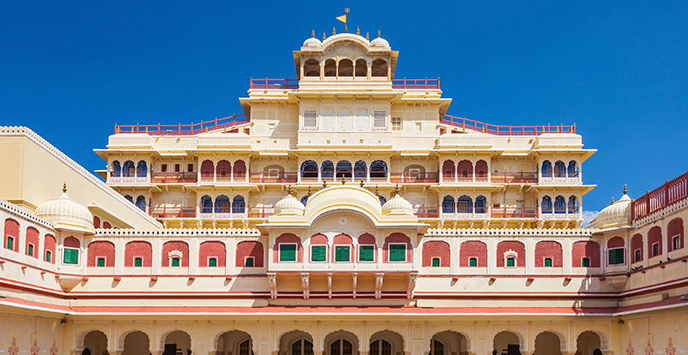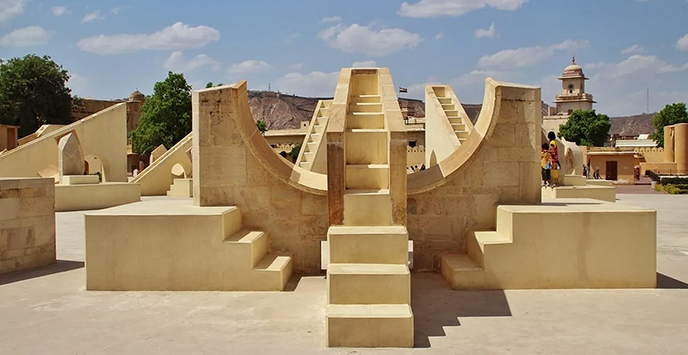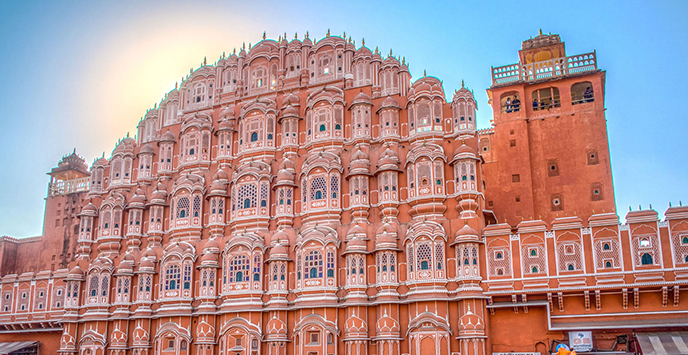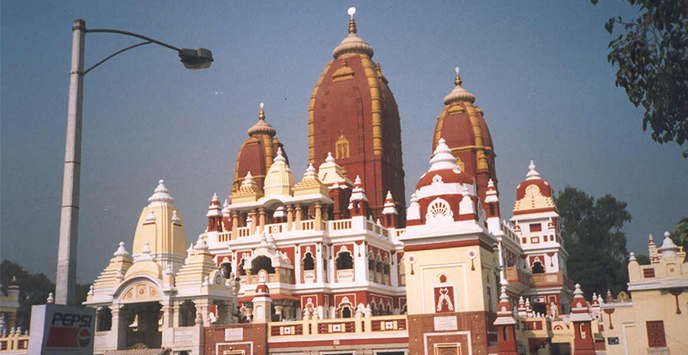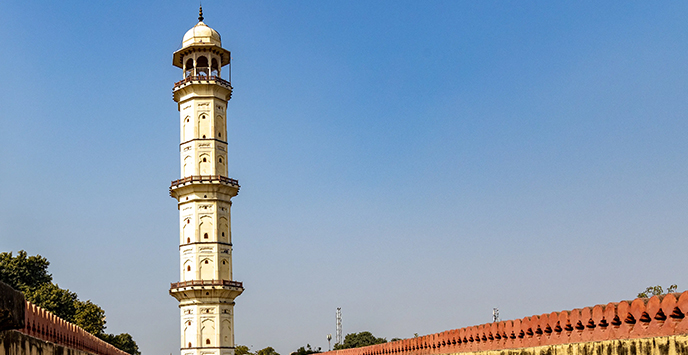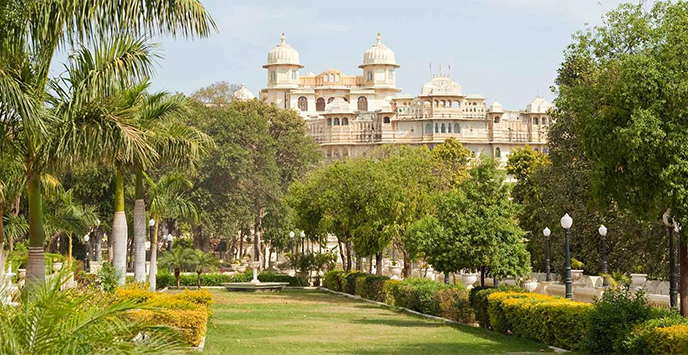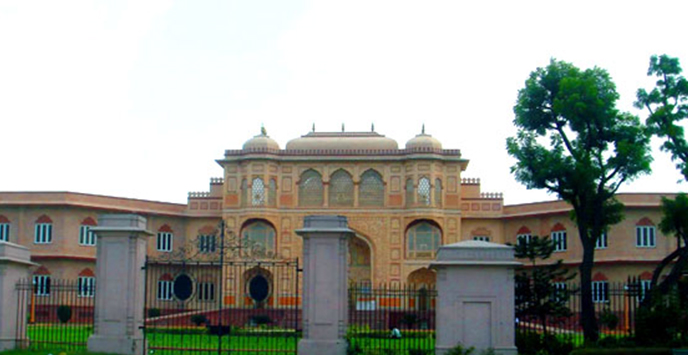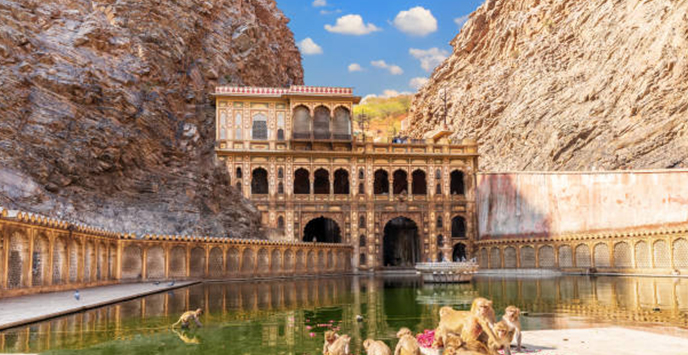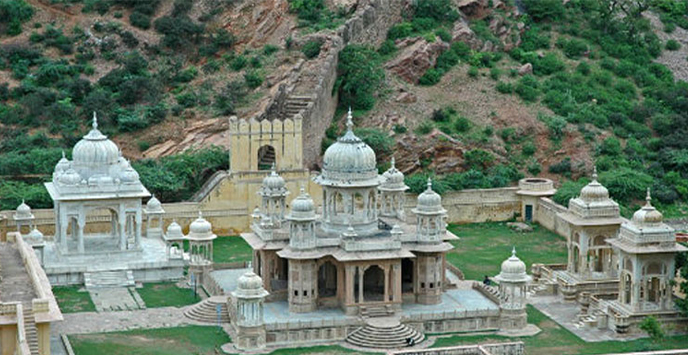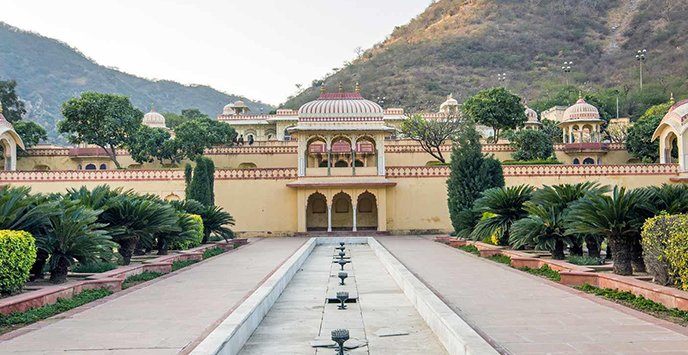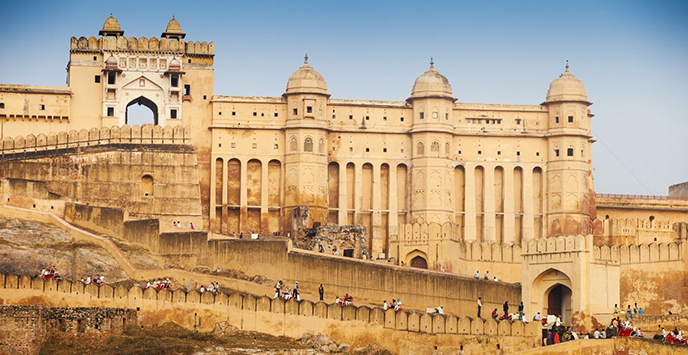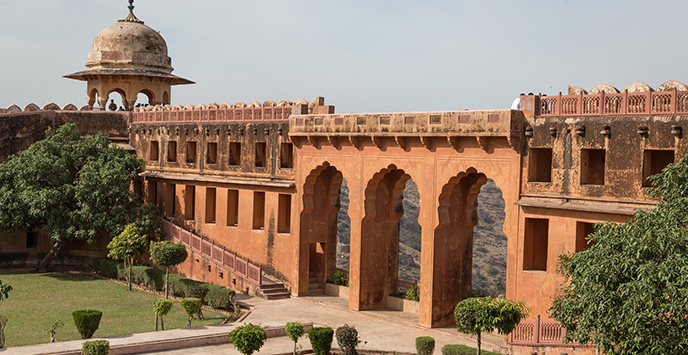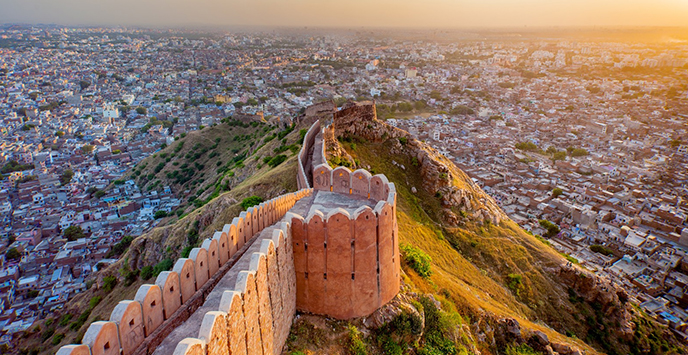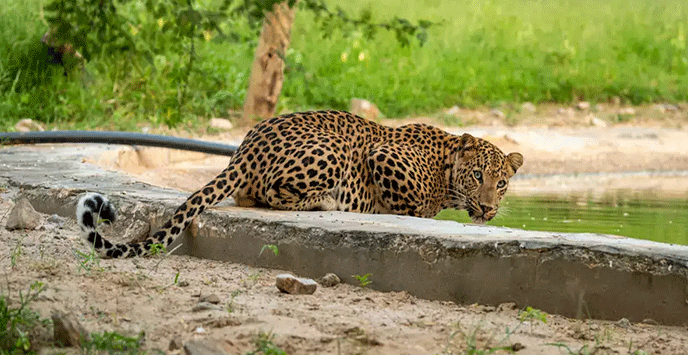The city Palace is a historic landmark. The carved arches are supported by grey-white marble columns studded with floral motifs in good and coloured stones. Two elephants carved in marble guard the entrance , where retainers whose families have served generations of rules are at hand to serve as guides.
The Palace interior houses a Museum containing select collection of Various Types of Rajasthani Dresses, a Fascinating armoury of Mughal and Rajput weapons: Swords of all shapes and sizes, with chased handles , some of them inlaid , enameled, encrusted with jewels and encased in bold and magnificent Scabbards. It also has an Art Gallery with a fine collection of Paintings , Carpets , Royal Paraphernalia and rare astronomical works in Arabic, Persian , Latin and Sanskrit , acquired by Sawai Jai Singh _ II for his study of Planets and their Movements.
